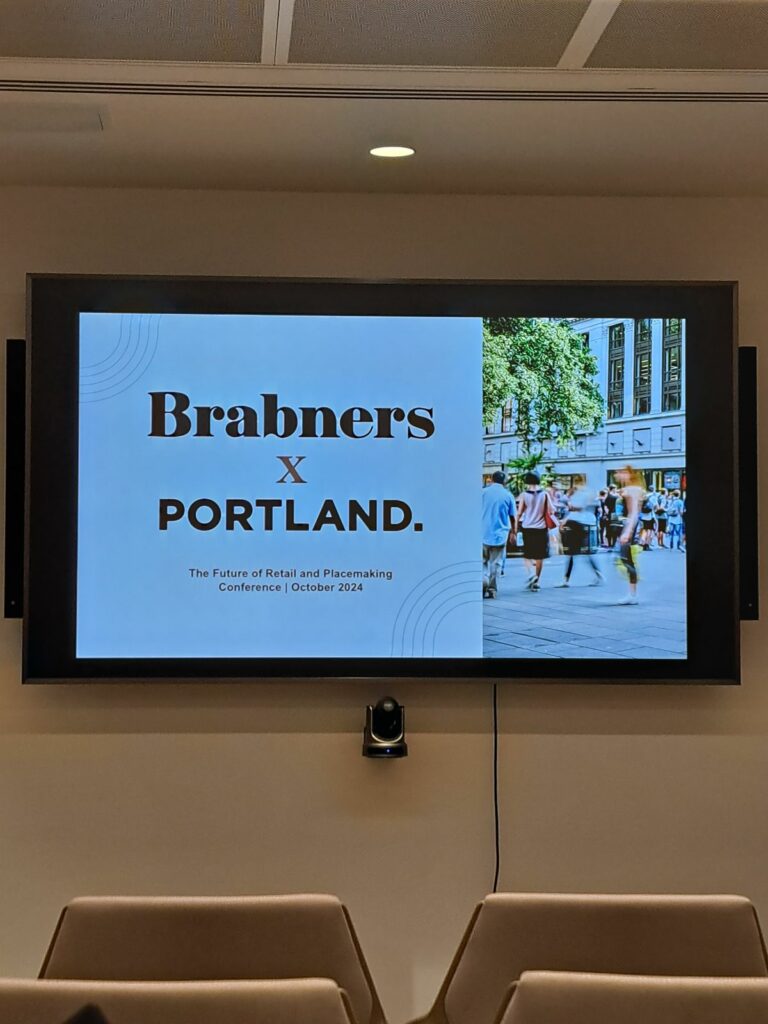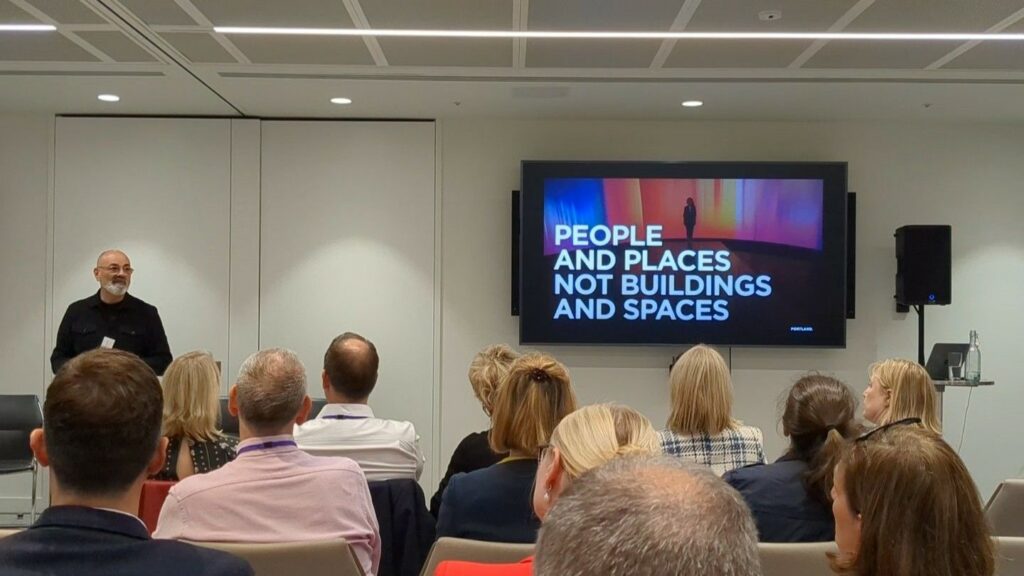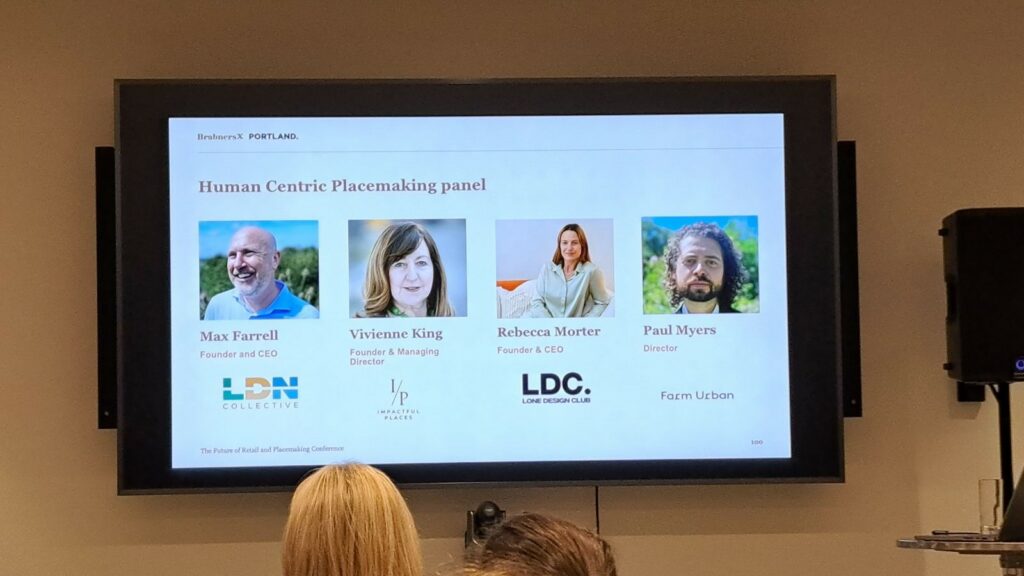Our Account Director, Tom Tawell, and Growth & Performance Manager, Ben Hammond, recently attended the Portland X Brabners Future of Retail and Placemaking Conference, which they found extremely insightful. The event was filled with valuable insights about the evolving nature of retail and placemaking. They have summarised some of their key takeaways from the discussions, with a focus on the future of retail, consumer trends, and the intersection of media, content, and physical spaces.

Citizen First, Not Consumer First
Ibrahim Ibrahim set the tone for the conference by urging us to think differently about how we approach placemaking. He challenged the common notion of “consumer first” thinking, advocating for a “citizen first” mindset instead. According to Ibrahim, the term placemaking itself is becoming redundant. He believes that no one truly “makes” places, he argued; we instead evolve, shape, and encourage their development. His insights underline the fluid and dynamic nature of today’s urban environments, driven by collaboration, interaction, and human-centric design.
While Ibrahim’s point that placemaking might become a redundant term is interesting, we believe the concept still holds value. Placemaking reflects the intentional effort to shape spaces that enhance community and well-being. While places do evolve naturally, we actively influence their design and function through conscious choices that promote social interaction and foster a sense of belonging. It’s not just about physical spaces forming on their own, but about collaborative, community-driven efforts that give them purpose and meaning, which is why we believe placemaking remains relevant and will do for the foreseeable future.

Future Consumers: Individuality, Experience, and Playfulness
Looking ahead, future consumers will be even more individual, expressive and experience-driven. In an increasingly digital and hyperconnected world, the retail experience is shifting from transactional to mindful and playful interactions. Brands must cater to this shift by creating hyper-physical retail experiences, creating a blend of physical presence with high engagement. Some successful examples include TikTok pop-up units, the immersive Vans World, and other similar activations that transcend mere product displays, offering memorable and shareable moments.
One of the most thought-provoking lines from Ibrahim’s presentation was, “Participation is the new consumption.” As consumers demand to be part of the story and experience, the success of retail will rely heavily on engaging participation, not just selling products.
The Future of Real Estate is About Content
Ibrahim emphasised that content is becoming the cornerstone of real estate strategy. It’s no longer just enough to fill spaces with stores; the focus should now be on how we create content with the stores. Whether it’s digital, experiential or cultural, integrated into the physical environment. This shift is visible in examples like Plaza Fiesta in Atlanta, a once-failed shopping centre that has been reborn as a Hispanic cultural hub. Interestingly, the space now attracts a diverse crowd, not just Hispanic visitors, as it has transformed into an experience-driven destination.
The 3 Emerging Retail Typologies
The presentation also touched on three key retail typologies that are shaping the future:
- Traditional: Fulfilling products through classic sales and transactional methods.
- Community: Brands leveraging physical spaces to foster community engagement and loyalty.
- Recruitment: Retail spaces are increasingly being used as media-generating activations. Brands are designing environments to create media buzz and gather impressions rather than purely focusing on sales.
Media Value and Physical Retail: Bridging the Gap
The panel on Human-Centric Placemaking reinforced the importance of media metrics in retail strategy. Rebecca Morter, from Lone Design Club, pointed out that big brands and landlords are increasingly focused on the media value generated by physical activations. Metrics like views, impressions and digital engagement are just as crucial as footfall in determining the success of a retail space.
Morter’s insights underscore the need for retailers to apply the digital metrics typically used for online campaigns to their physical retail strategies. This shift represents a new era where data-driven decision-making will shape not only marketing but also the design and function of physical retail environments.
In conclusion, the Future of Retail and Placemaking Conference revealed that the lines between content, community and commerce are becoming increasingly blurred. Retail spaces of the future will prioritise experiences over transactions, blending digital engagement with physical immersion to meet the needs of a more expressive and mindful consumer. Retailers and landlords alike will need to embrace these shifts, focusing on participation, media metrics, and community-centric spaces to stay relevant in this rapidly evolving landscape.

